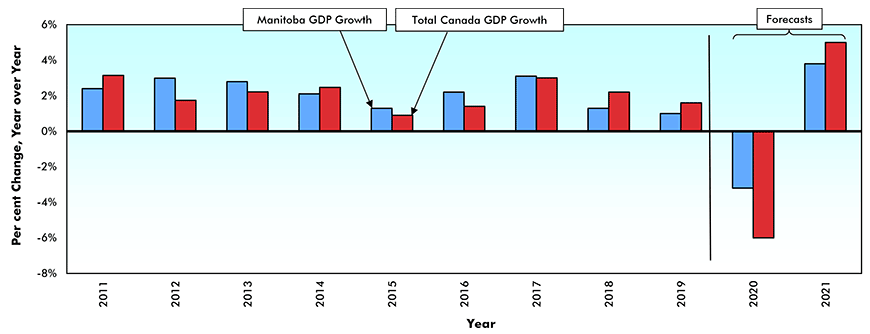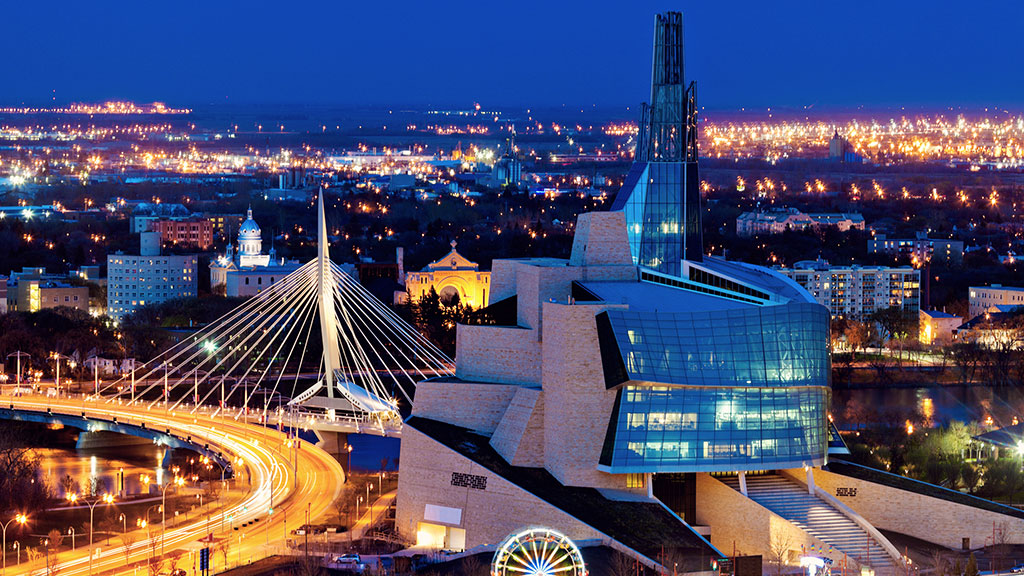Manitoba’s ability to quickly flatten its COVID-19 curve in mid-April enabled firms in the province to avoid extended lockdowns and to quickly start re-hiring laid-off staff. Over the past five months, Manitoba has clawed back a country-leading 86.7% of the jobs it lost due to the COVID-19 lock-down.
The major reason for this larger clawback of jobs is that relatively fewer (4.9%) Manitoba businesses were forced to close between March and June versus 9.6% for the nation as a whole. Since April, employment in Manitoba is up by +13.5%, significantly outpacing the growth of the province’s labour force (+8%). As a result, the province’s unemployment rate has dropped from 11.4% to 7.0%, the lowest in the country.
Manitoba’s exports strong despite China’s canola restrictions
An important contributor to the relative health of the Manitoba economy vis-à-vis the rest of Canada has been its merchandise exports. While Canada’s foreign sales year to date (January-August) have fallen by -13%, Manitoba has seen its foreign sales shrink by less than -1%, second only to P.E.I.
Across products, and although partly banned by China, canola exports are up by +36% ytd due to strong demand in Europe. This increase has complemented gains in sales of wheat, pharmaceuticals and pork. Assuming a second wave of COVID-19 infections will hurt the global economy less than the first, exports should give a larger boost to the province’s growth in 2021 than they have this year.
Housing demand rebounds faster than supply
A revitalized labour market and a concomitant improvement in consumer confidence, against a background of very low interest rates, have contributed to a strong rebound in housing demand. Since April, sales of existing homes in Manitoba are up by 46%.
Reflecting this solid rebound, average house prices of detached homes in Winnipeg accelerated from +1.3% y/y in April to +11.0% in August, while prices for the entire province are up by +9.6% y/y, a 10-year high. Reflecting this strong pattern of demand, the months’ supply of homes for sale has shrunk from 6.3 to 2.2 in August, second only to Ontario.
Despite the surge in demand, housing starts over the past four months are down -26% from the same period a year earlier. The effects of a very sharp COVID-driven drop in net migration will likely dampen demand for rental accommodation in the near term. This said, given the exceptionally low level of completed and unabsorbed homeowner and condominium dwelling units, and assuming there is an easing of international travel restrictions, the impact of stronger net migration against a backdrop of stronger job growth should give a boost to residential construction in the first half of 2021.
Consumer spending exhibits “V” shaped recovery
The stronger fundamentals underpinning housing demand in Manitoba appear to have also contributed to a solid snapback of consumer spending. After contracting by -29% in February and March, retail sales in the keystone province have rebounded by +45% since April. Important contributors to this gain, the third strongest in the country, have included sales of motor vehicles (+150%), electronics and appliances (+76%) and health and personal care products (+74%).
There is little doubt that consumer spending will revert to a more sustainable pace heading into 2021 due in part to heightened uncertainty about the potential impact of the recent uptick in COVID-19 infections both inside and outside Manitoba. One sign that consumers are scaling back their spending is the recent retreat in consumer confidence in September, caused by significant cooling of plans to make a major purchase.
Non-res investment in Manitoba is strong
Although COVID-19 has depressed consumer spending and housing starts, the volume of non-residential investment in Manitoba (January to August) is up by +17.1%, more than twice its +7.2% rise during the first eight months of 2019. The bulk of this increase has been the result of a +69% ytd jump in spending on institutional projects, specifically day care centres, nursing homes and rest homes.
Spending on industrial projects has risen by +12% year to date mainly on account of a +67% jump in spending on factories and plants, including the $65 million Burcon NutraScience Corp pea processing facility near Portage la Prairie. Other major projects which will boost capital spending in 2021 include the (Winnipeg) North End Sewage Treatment Plant Upgrade, the Chief Peguis Trail Extension West and ongoing construction of the Keeyask Generating Station on the lower Nelson River.
Manitoba’s economy will outpace other provinces
There is no doubt that the economies of all 10 provinces will contract in 2020 due to the impact of COVID-19. However, the faster recovery of Manitoba, as noted above, strongly suggests it will outperform the rest of the country in 2020. Moreover, the recently passed Bill C-2, which extends income support to individuals who are self-employed or not eligible for Employment Insurance, will underpin consumer spending in the province throughout 2021.
John Clinkard has over 35 years’ experience as an economist in international, national and regional research and analysis with leading financial institutions and media outlets in Canada.
Real* Gross Domestic Product (GDP) Growth — Manitoba vs Canada

Chart: ConstructConnect – CanaData.











Recent Comments